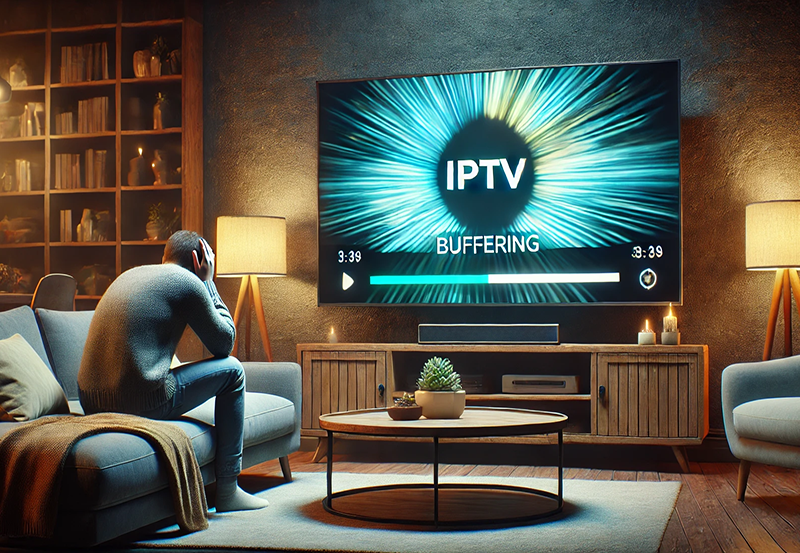The convergence of IPTV (Internet Protocol Television) and Virtual Reality (VR) has opened new avenues for immersive and interactive content consumption. Combining IPTV’s vast array of content with VR’s ability to create lifelike environments transforms how we experience entertainment, education, and even virtual travel. This article explores how to integrate IPTV with VR experiences effectively, the benefits of this integration, and how it is shaping the future of entertainment.
Buy 1 Year IPTV and Enjoy Unlimited Content
1. Why Integrate IPTV with VR?
The integration of IPTV with VR offers unique advantages:
- Immersive Entertainment: VR brings IPTV content to life by placing viewers in a 360-degree virtual environment.
- Enhanced User Engagement: Interactive features in VR make IPTV experiences more engaging and dynamic.
- Virtual Travel and Exploration: Explore destinations through IPTV travel channels combined with VR’s immersive environments.
- Education and Training: Use IPTV educational channels with VR for hands-on, simulated learning experiences.
2. Requirements for IPTV and VR Integration
Before diving into integration, ensure you have the following:
- VR-Ready Device: Oculus Quest, HTC Vive, or other VR headsets that support media playback apps.
- IPTV Service: A provider offering compatible formats for streaming on VR devices.
- High-Speed Internet: A stable connection of at least 50 Mbps is recommended for seamless VR streaming.
- Compatible IPTV App: Applications like Virtual Desktop, Skybox VR Player, or Plex work well for streaming IPTV in VR environments.
3. Setting Up IPTV with VR
Step 1: Install a VR-Compatible Media Player
- Download a VR media player from your device’s app store (e.g., Skybox VR, Virtual Desktop).
- Ensure the app supports M3U playlists or integrates with your IPTV service.
Step 2: Configure Your IPTV Service
- Log in to your IPTV provider’s app or portal and retrieve your playlist URL or Xtream Codes.
- Add the IPTV playlist to the VR media player.
Step 3: Set Up Your VR Environment
- Launch the VR media player and enter the IPTV playlist or server details.
- Choose your desired viewing environment, such as a virtual theater, living room, or outdoor setting.
Step 4: Start Streaming
- Browse through IPTV channels, movies, or on-demand content within the VR player.
- Enjoy an immersive IPTV experience in your virtual setting.
4. Enhancing the VR IPTV Experience
Interactive Features
- Enable interactive menus for browsing and selecting IPTV channels within VR.
- Use voice commands with compatible VR headsets to navigate IPTV content hands-free.
Customizable Viewing Environments
- Select or design your virtual surroundings to match your mood or the type of content you’re watching.
360-Degree Content
- Access IPTV channels offering 360-degree videos for a fully immersive VR experience.
5. Applications of IPTV and VR Integration
Entertainment
- Watch live sports or concerts as if you’re attending in person, thanks to VR’s immersive capabilities.
- Enjoy blockbuster movies in a virtual cinema with friends.
Education
- Stream IPTV educational content in VR to simulate real-world scenarios and hands-on learning.
Travel
- Use IPTV travel channels combined with VR to virtually visit destinations around the globe.
Fitness
- Follow IPTV fitness programs in VR environments that simulate gyms, outdoor spaces, or serene landscapes.
How to Use a Raspberry Pi as an IPTV Device
6. Troubleshooting Common Issues
Playback Lag
- Reduce the streaming resolution or optimize your network for faster speeds.
- Use an Ethernet connection for a more stable internet connection.
Incompatibility Issues
- Ensure your IPTV provider’s content is compatible with VR players.
- Update both the VR media player and IPTV app to the latest versions.
Audio/Video Sync Issues
- Adjust audio delay settings in the VR media player.
- Restart the app or device to resolve temporary glitches.
7. Future Trends in IPTV and VR Integration
As technology evolves, expect innovations in this space:
- AI-Powered Personalization: Tailored content recommendations based on user preferences and VR activity.
- Advanced Environments: Hyper-realistic VR settings for IPTV streaming.
- Live Interactive Events: Real-time interaction during live sports, concerts, or events streamed via IPTV in VR.
8. Benefits of IPTV and VR Integration
Integrating IPTV with VR offers:
- Immersive Viewing: Transform how you engage with content by making it more lifelike.
- Versatility: Explore different types of content, from movies to educational programs, in new ways.
- Social Connectivity: Share the VR IPTV experience with friends, family, or fellow users in virtual spaces.
9. Comparing IPTV and VR to Traditional Streaming
Advantages of IPTV and VR
- Enhanced immersion.
- Dynamic interaction and customization.
- Unique content delivery options.
Limitations
- Requires advanced hardware.
- Can involve a learning curve for new users.
10. Conclusion
The integration of IPTV with Virtual Reality represents a significant leap forward in how we consume content. Whether you’re watching a live sports event, attending a virtual class, or exploring a travel documentary, combining IPTV with VR delivers an unparalleled level of engagement. By following the steps outlined in this guide, you can unlock a futuristic entertainment experience that redefines traditional viewing.
The Best Media Players for IPTV





